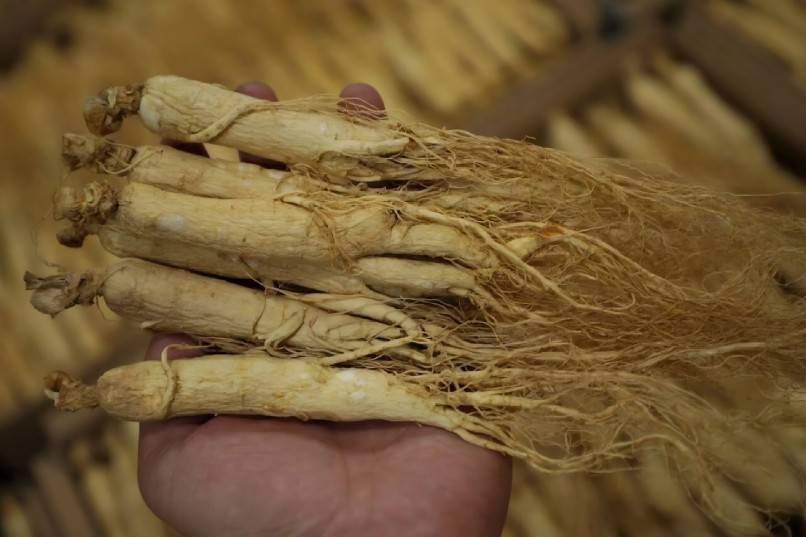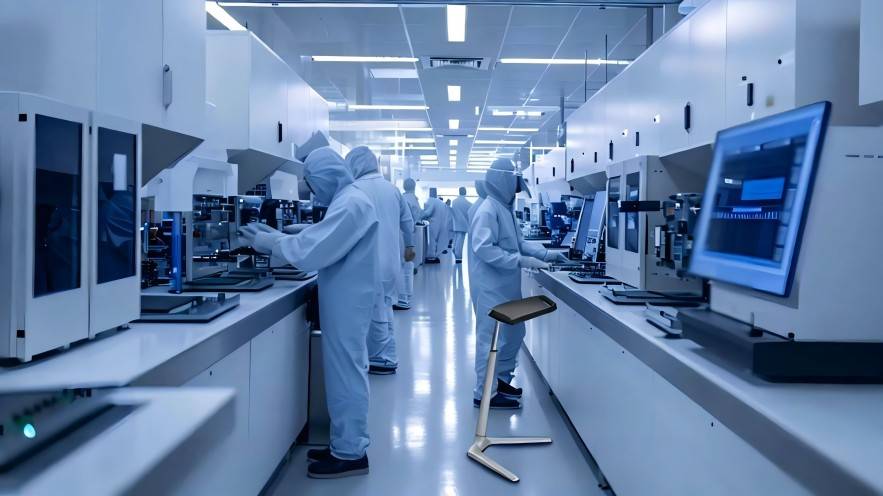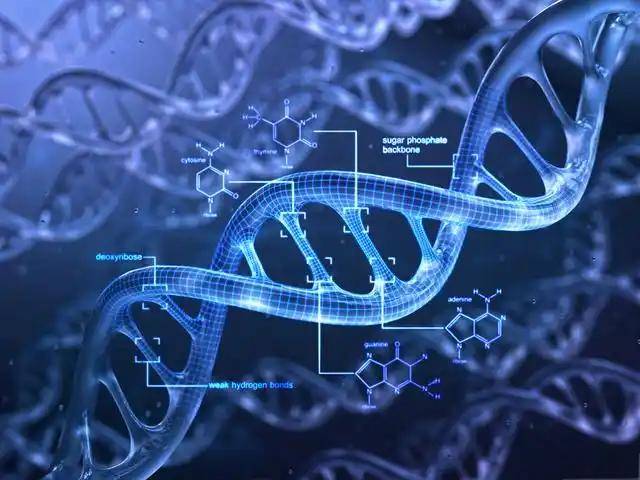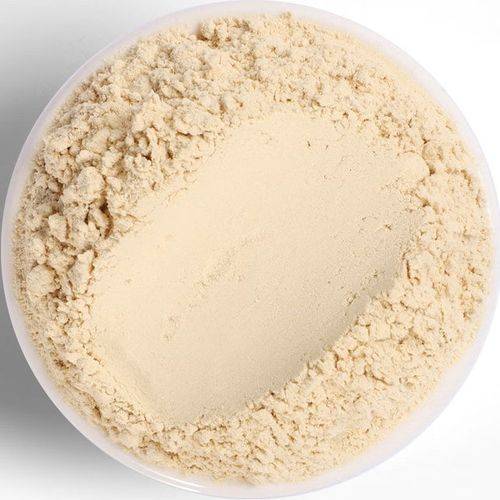ギンセノシドの合成に関する研究
Ginseng (米国産人参C。 A. Mey), belonging to のgenus Panax でthe family Araliaceae, is a well-known medicinal plant mainly distributed in northeastern China, Korea とJapan. Ginseng contains various chemical components such as saponins, polysaccharides, polyacetylene and flavonoids. Among them, ginsenoside is a secondary metabolite のginseng and is its main bioactive component. It has a wide range のphysiological and pharmacological activities, including immune system regulation, anti-stress, hypoglycemic, anti-inflammatory, antioxidant and anti-cancer effects. Its mechanism のaction is mainly to mobilize the body'の内部要因は、ほとんど毒性や副作用で、その効果を発揮する神経保護機構、および免疫機構を動員。
高麗人参は現在、世界の一つです'のベストセラーの伝統的な中国薬と広く世界中で使用されています。高麗人参と関連製品の世界市場での総消費量は3億5000万ドルに達したと推定されている[1]。しかし、高麗人参は栽培期間が長く(6 ~ 7年)、紅皮病や根腐れなどの深刻な植物病のため、栽培が難しい[1]。したがって、ニンジンの組織および細胞培養(カルス組織および細胞懸液など)を研究し、agrobacterium tumefaciensによる正常な根の根形成を誘導し、ginsenosidesを生成する。しかし、この方法によるギンセノシドの生産効率は非常に低い。そこで、ギンセノシドを過剰生産するために代謝工学が用いられ[2-3]、これはギンセノシドの生産効率を向上させる魅力的な戦略である。

1ギンセノシドの概要
The main pharmacological active ingredient の高丽人参is ginsenosideトリテルペンサポニンですGinsenosides名RX (X = 0, a−1鉱区、A-2持ってきて爆撃機の上の人じゃ、C、D、E F 20-O-F、てろ助け、遊ば、H-1、ⅆ、X) Rf価値を十分順に下から順番にいた[4]。したお金板上ギンセノシド(ginsenosides)は、主に糖のヒドロキシ基が非糖基に結合した化合物である糖の誘導体である。非糖部分はアグリコンと呼ばれる。ギンセノシドは、アグリコンの構造により、ダムマラン型とオレアナン型の2つのグループに分類される。ダンマランタイプが主なタイプで、基本骨格は四輪車である。3、6、20番炭素の糖基の位置に応じて、さらにプロトギンセノールとプロトギンセノールに分けることができる。唯一のギンセノシドroはオレアナン型のギンセノシドであり、オレアノール酸をアグリコンとして五環式骨格を持つ。
現在、100種以上のギンセノシドからなることが確認され、40種以上のギンセノシドが単離されているが、その大部分はダマラン型であり、最近、高麗人参の芽や加工人参、高麗人参の葉から分離された新ギンセノシドも含まれている。その中で、最も広く研究され注目されているギンセノシドは、rb1、rb2、rc、rd、rg1、rg2、rg3、re、rf、rh1、およびrh2です[6]。新たに発見されたギンセノシドの生物学的活性については、まだ研究が必要である。
2ギンセノシドの生合成
植物のテルペン生合成経路には、mva経路と2- c-メチル- d-エリトリトール-4-リン酸(mep)経路の2つがある。従来、ジンセノシドはメバロン酸経路(mva経路)を経てippとdmappを合成し、さらに2,3-オキソコーレンがヒドロキシ化とグリコシル化によって修飾され、最終的に様々なギンセノシド単量体を生成すると考えられていた。最近の研究では、植物は糖鎖中間体のピルビン酸と3-ホスホグリセリン酸を酵素作用を介してmep、最終的にはippとdmappを生成する前駆体としても利用できることが示されている。eisen-vaichらは、c13同位体トレーサーを用いて抗がん剤テルペンパクリタキセルの生合成経路を研究し、その結果、パクリタキセルは主にmep経路を介して合成されることを示した[7]。ギンセノシドもテルペノイドであるが、高麗人参にmep経路が存在するかどうかについての報告はない。
In plants, the MVA pathway is found to exist in the cytoplasm, while the MEP pathway is found in the plastids [8]. They are separated, but the reaction processes are carried out simultaneously. Although these two pathways exist in two different cellular spaces, they both generate IPP. Whether there is an exchange of IPP between the two pathways and the details of the exchange have always been one of the hot topics in the study of terpene metabolism in plants. Researchers have used inhibitors of key enzymes to inhibit the MVA and MEP pathways separately, confirming that the two pathways are largely independent of each other, while also finding that IPP exchange between the two pathways does occur [9-10]. Therefore, to some extent, the IPP synthesis of the two pathways has a compensatory function, which may also be one of the reasons why the MEP pathway in plants has not been discovered earlier. However, to date, there has been no research on the MEP pathway in ginseng. In addition, it remains to be studied whether both pathways or only one of them plays an important role in ginsenoside synthesis.

高麗人参では、ステロイドとトリテルペノイドの生合成経路は同じ前駆体である2,3-オキシドスクァレンを共有し、2,3-オキシドスクァレンを形成する環化と分岐の段階は同じである。高麗人参では、フィトステロールとトリテルペノイドの合成は、オキシドスクレンシクラーゼ(oscs)によって触媒される2,3-オキシドスクレン環化の生成物から始まる。人参、β-amyrinシンターゼ(βas) dammaraneシンターゼ(DS)とcycloartanolシンターゼ(CS)に属するoxidoスクアレンcyclase (OSC)家の家督はtriterpenoidの分岐点に位置であり、ステロール生(図1)。CAS同時にcycloartanol結成のとして使用することができる前駆体植物sterols。DSおよびβ皆2人前兆ginsenosides tetracyclicを提供するとDS dammarane霊骸合成dammarane-type ginsenosidesと霊骸のβas tetracyclicを与えるの合成oleanane-type ginsenosides。のintermediates dammaraneとβ-boswellic酸に変換することができるginsenosides一連のhydroxylation glycosylation反応することがしばしばあり[13]。シトクロムp450はギンセノシド骨格の水酸化に関与していると考えられ[14]、グリコシルトランスフェラーゼはギンセノシド骨格のグリコシル化に関与している。
3ギンセノシド生合成に関わる酵素をコードする遺伝子のクローニングと研究
leeら[15]高麗人参の葉cdnaライブラリーのest解析により、ssの完全長cdnaクローン(pgss1、アクセッション番号:ab115496)を単離した。pgss1は多重コピー遺伝子か、複数のイントロンを持つ遺伝子と考えられている。pgss1の過剰発現はpgss1酵素の活性を高め、植物ステロールとギンセノシドの含有量を有意に増加させた。これらの結果は、pgss1がフィトステロール生合成のみならず、ギンセノシド生合成においても重要な調節酵素であることを示している。同じ結果は、パナックス朝鮮人参pgss1の異型過剰発現でも確認された[16]。この結果では、植物ステロール(b-シトステロール、スチグmasterol)およびトリテルペンサポニンの濃度が、トランスジェニックなパナックス朝鮮人参で2.0 ~ 2.5倍増加した。また、他の植物でチョウセンニンジンのトリテルペンサポニン生合成に関与する遺伝子を異種で過剰に発現させることで、ギンセノシドの濃度を上昇させ、ギンセノシドの生合成機構を解明することができることが示唆された。
釧路中枢らです。[12]孤立违いcDNAクローン符号化βwシンターゼ(PNY1とPNY2)根毛墓参それより。この2つのβ-ASs複数のコピーを進化した5月に共通祖先がいて进化の过程や突然変異ます。鍵内部部の極上の酵素を形β-asarone (PNY1)が確定した。さらに、pny1の部位特異的変異研究により、製品特異性に重要な1つのアミノ酸残基tyr261が同定された。β-Amyrinとその老廃物は往々にしてtissue-specific〔17〕、せいか一種のoleanane-type■サポニン(Ro)はすでに墓参それより決まっていた。
ダンマランシンターゼ(ds)は、ギンセノシドの最も重要な生合成酵素であると考えられている。2,3-オキシドスクアレンは(20 r)-ダムマランではなく(20 s)-ダムマランに変換される。最近、研究者はrt-pcr技術を使用してdammarane-ii合成酵素遺伝子をクローンしました[18]。このdsは、770アミノ酸のポリペプチドをコードする2,310 bpのorfを含み、予測される分子量は88.3 kdaである。さらに、遺伝子導入高麗人参のrna干渉dsはds発現を抑制し、高麗人参根のサポニン産生を84.5%減少させる[19]。これらの結果は、dsがギンセノシド生合成に関与する重要な酵素であることを示しており、dsの過剰発現はギンセノシド生合成を有意に促進する可能性がある。
「いや緊急どころかまだSS、DSβw CSについても研究されている。高麗人参では、ginsenoside protopanaxatriolの産生をコードする遺伝子(アクセッション番号ab009031)が同定されており[20]、高麗人参における新しい植物ステロール合成経路が示唆されている。また、表現のシーケンスタグ(merdel」EST)分析結果の異なるcDNA図書館の組織の高丽人参[5,14,21]見せginsenosideに係わる遺伝子候補生符号化酵素HMGRなどFRS、geranylgeranylビスホスホナート酵素を、シトクロームP450、glycosyltransferase、β-glucosidaseとlupeolシンターゼ(LUS)。
4展望
Among the various chemical components of ginseng, ginsenosides are its main active ingredients. Currently, most studies have focused on the saponin components. Before the MEP pathway was discovered in bacteria and plants, the MVA pathway was considered the only synthetic route for the synthesis of triterpenoid saponins from IPP and DMAPP. The MEP pathway has now been shown to exist in a variety of plants; however, more research is needed on the MEP pathway in ginseng.
ギンセノシド生合成のメカニズムは分子生物学や酵素学の手法を駆使して明らかにされており、ギンセノシド生合成に関連する酵素をコードする遺伝子や候補遺伝子の完全なcdna配列が得られるようになってきている。また、est技術は、ギンセノシド合成に必要なスクアレン合成酵素(hmgr、fps、ファネシル二リン酸合成酵素、se)や、その後の段階で必要な酵素(シトクロムp450、糖転移酵素、b-グルコシダーゼ)の遺伝子クローニングや発現にも広く利用されています。また、高麗人参のルピオールとラノステロールを合成するための候補遺伝子が発見され、高麗人参の代謝経路に対する理解が深まった。伝統的に、人参の根はギンセノシド生合成のための主要な組織と考えられてきた。しかし、ギンセノシド生合成の大部分を担うdsは高麗人参の花芽で最も高いレベルで発現している[19]。これは、高麗人参の花芽が、ギンセノシド生合成経路をさらに分析するための理想的な材料である可能性を示唆している。
これまで、ギンセノシド生合成に関与する酵素をコードする遺伝子を同定するために用いられた主な方法は、rt-pcr[12 - 13]とest解析[5、14、21]でした。高麗人参のゲノムに基づいた高麗人参細菌人工染色体ライブラリーが構築された。これらのリソースは、ギンセノシドに関連する遺伝子の同定だけでなく、遺伝子発現の制御機構の解明にも利用できます。近年、rnaiは植物代謝工学において非常に有効な技術手段となっている。特定の遺伝子の発現を効果的に抑制することができ、高麗人参の代謝調節に関わる遺伝子の発見と機能検証のためのツールとして活用できる。rnai技術を使用すると、ギンセノシド合成に関連する遺伝子を大規模かつ高効率に解析することができ、可能な代謝調節遺伝子をより効果的かつ正確に同定し、その機能を検証することができます[22]。現在、ギンセノシド合成経路の解明はかなり進んでいるが、関連する酵素の触媒レベルの研究は行われていない。また、その後のジンセノシド生合成の過程についても明らかにする必要があり、ジンセノシド生合成の解析にはまだまだ時間がかかる。
高麗人参サポニンは二次代謝物の重要な成分であり、その内容と組成は主に生合成におけるキー酵素と細胞内での発現レベルによって決定される。植物ステロールおよびトリテルペノイドの代謝は、複数の要因によって制御されている非常に複雑で動的なプロセスです。ギンセノシドの代謝経路が完全に解明されるまでにはまだ多くの疑問が残されている。しかし、高麗人参の経済的・薬理的な重要性を考慮すると、依然として研究すべき重要な分野である。
参考:
[1] hong s g, lee k h, kwak j,et al.パナックス人参に関連する酵母の多様性[j]。^『仙台市史』仙台市、2006年、474 -679頁。
[2] wu qiong, zhou yingqun, sun chao, et al。ギンセノシド生合成・二次代謝工学[j]。中国生物工学会誌,2009,29(10):102-108。
[3]梁Yが高く、趙S。ギンセノシド生合成の進行状況の不理解[j]。2008植物生物10:415-421。
[4] okazaki h, tazoe f, okazaki s,et al. increase cholesterol biosyn- thesis and high cholesterolemia in mice overexpressed squalene synthase in the liver[j]。^岩波書店、2006年、45 - 45頁。
[5] kim m k, lee b s, in j g,et al. exp ressedse- quence tagsの比較分析 (か) of 人参葉か[J]。植物 セル 2006年Rep、25:599 -606。
[6]ヘルムズSです。[j]がんの予防と治療:高麗人参[j]。^ a b c d e『人事興信録』人事興信録、2004年、259-274頁。
[7] eisenvaich w, menhard b, hylandst p j,et al.タキソールのバイ生合成に関する研究:タキサンの炭素骨格はメバロノイド起源ではない [J]。1996年生化学93:6431-6436。
[8] seemann m, tse sum bui b, wolff m,et al. mep経路を介した植物葉緑体におけるイソプレノイド生合成:gcpe / ispgの直接的なチラコイド/ferredoxinde- pendent光還元[j]。^ a b c d e f『官報』第1658号、大正8年、547頁 1552.
[9] hemmerlin a, hoeffler j f, meyer o,et al 細胞質メバロン酸と可塑性メチルエリトリトールリン酸経路 タバコでは明るい黄色-2細胞[j]。2003年生物化学の雑誌278:26666-26676。
[10] rohdich f, zepeck f, adam p,et al.イソプレノイド生合成のデオキシキシルロースリン酸経路:ispgおよびisphタンパク質が触媒するre作用機序に関する研究[j]。^ a b「proceedings of the na - tional academy of sciences, usa,2003」。proceedings of the na - tional academy of sciences, usa(2003年). 2006年10月10日閲覧。
[11]釧路t,大野y,渋谷m,et al. panax参腸ミクロソームによる2,3 -oxidosqualeneからdammarenediolへのin vitro変換[j]。生物&製薬公報」を発表した。1997年20:292-294じゃない。
[12]釧路t,渋谷m, ebizuka y。β-アミリン合成酵素:高等植物で最も一般的なトリテルペンの形成を触媒するオキシドスクレンシクラーゼのクローニング[j]。^ a b c d e f g h『日本の歴史』、1998年、256:238-244頁。
[13]釧路 T,渋谷 M, EBIZUKA Y "はない分子 クローン of ox-イドスクレンシクラゼpanax ginseng由来のcdna:コードするアイソジーン betaamyrin シンターゼ。へ 自然 薬 研究 21 世紀[J]。略称はmedica international 国会 1157年(保元2)シリーズ、1998年より: 421-428。
[14] jung j d, hahm y, hur c g,et al 分析 of ginseng exp ressed シーケンス エディか[J]…^『官報』第2222号、大正11年、224-230頁。
[15] lee m h, jeong j h, seo j w,et al. enhanced triterpene and phyto- terol 生 in Panax ginseng overexpressing squalene シンターゼ遺伝子[J]。2004年植物細胞Physiol、45 (8) : 976-984。
[16] seo j w, jeong j h, shin c g,et al Eleutherococcus senticosus 増加 植物ステロール and triterpeneか[J]集積にほかなりません。2005年Phytochemistry、66:869-877。
[17] phillips d r, rasbery j m, bartel b,et al 植物におけるトリテルペン環化[j]。^ a b c d e f g h『植物学概論』、2006年、9:305-314頁。
[18] pimpimon tansakul m s,釧路哲夫,ebizuka yutaka。 テンマレネジオール- iiシンターゼは、パナックス人参における最初のギンセノシドbi-合成専用酵素である[j]。2006年それ手紙fbi、580:5143-5149。
[19] han j y, kwon y s, yang d c,et al of the パナックス人参のダムマレネジオール合成酵素遺伝子[j]。plant cell physiol,2006,47(12): 1653-1662。
[20] suzuki m, xiang t, oyamama k,et。ラノステロール合成酵素indicotyle- donous plants[j]。^「plant & cell physiology,2006,47: 565-571」。plant & cell physiology . 2006年7月25日閲覧。
[21] choi d w, jung j, ha y i,et al.メチルjasマナート処理された高麗人参の毛根の転写物の分析により、ギンセノイドなどのバイオ合成に関与する遺伝子を同定する 副役立ちますか[J]。植物 セル 評判は05シーズンまで、23日:557-566た。
[22] pan xichun, sun min, zhang lei, et al。rna干渉とその薬用植物代謝工学への応用[j]。^ a b c d e f g h『漢書』、2005年、36(9):1281-1284。


 英語
英語 フランス
フランス スペイン
スペイン ロシア
ロシア 韓国
韓国 日本
日本





